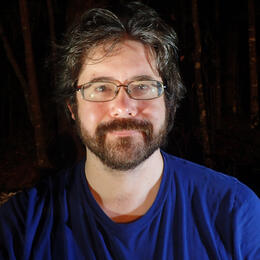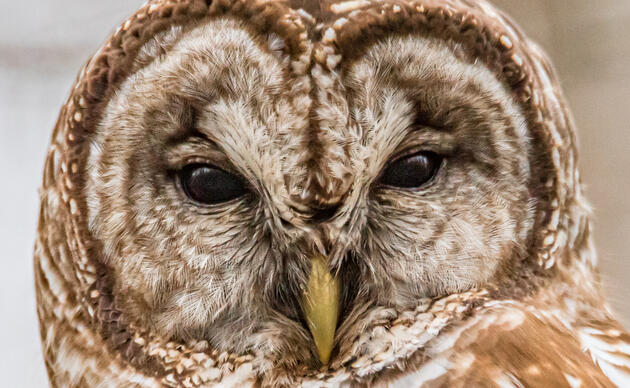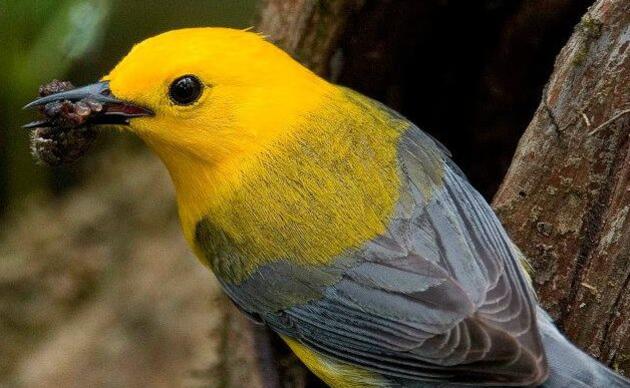So if you haven’t heard yet, Beidler Forest has fireflies (or lightning bugs, if you’re particularly particular). Firefly ecotourism has been increasing in popularity over the last few years, with high demand for places like the Congaree National Park and the Great Smoky Mountains National Park, and so we said to ourselves, could we offer a program like that? We knew we had fireflies, I see them all the time leading night explorations and we’ve observed synchronizing ones before in years past, but all we had was anecdotal memories of them.
In order to make such a program worthwhile we had to know more about our fireflies, what months they were active, what hours they were active, where they were active, and so on. So I was tasked with going out into the woods at night to observe and record what I could in order to expand our understanding on these enigmatic insects, which suits me well since I’m basically nocturnal myself, anyway.
Since March I’ve been going out at least once a week and recording from dusk to a few hours after sunset, noting temperature, the moon’s phase and position, light levels, humidity, wind, and so on, to try and build up any kind of correlative pattern that would tell us what conditions fireflies prefer. What I’ve discovered is that there’s a whole hidden world out there that glows in the dark.
Different species of fireflies have different flash patterns, sort of like how different birds have different songs. One species, which synchronizes, I’ve recorded flashing an average 42 times in 30 seconds, and they just never stop flashing, all syncing over and over for hours at a time. Another kind will flash once, wait about 2.5 seconds, flash again, and wait 6 more seconds before repeating. A 3rd will create a big flash, and then dim slightly and fade over 2 seconds, often flying up or down or to the side in the process, creating what looks like lanterns off in the distance. Sometimes that one will wait four seconds before doing it again, sometimes not, and then they just vanish into the darkness like they never existed.
It also turns out that fireflies are also particularly particular. Some flash patterns I only see in the forest, and some I only see out over the swamp wherever there’s water (the lantern fireflies reflecting over the water between the trees is especially awesome, my favorite kind by far). Some will avoid the hundred foot stretch of palmettos near the start of the boardwalk trail but fill the forest up on either side. They are specific to certain microbiomes within what we call the hardwood bottomland forest and the swamp itself. This also reminds me of birds, Prothonotary Warblers sticking to the swamp and Swainson’s Warblers preferring to stay in as gnarly of vine tangles as possible.
Their activity time also varies. In March I observed a species that emitted 2 flashes in 2 seconds with a four second interval in the forest, while we had a 2 flash in 2 seconds with a 6 second interval species in the swamp. They rarely crossed paths. They both sort of phased out in April, and that’s around when a species appeared that would only become active in the forest at dusk for about 30 minutes before going dark again, followed by even more species that became active later. Every night I’ve gone out has been a little different, every time there was a new surprise.
And their elevation also varies. The synchronizing ones stay close to the ground and are rarely higher than our heads on the boardwalk, but just last week I observed a species that also flashed nonstop just below the canopy out in the swamp, usually 30 feet high or higher. They flash slower than the synchronizing species of the woods, only about 26 times in 30 seconds, and may or may not sync up (I’m still trying to figure that out since they are constantly appearing and disappearing amongst the leaves). So like Northern Parulas and Yellow-billed Cuckoos taunting photographers from the heights and Carolina Wrens taunting photographers from the forest floor, different firefly species also have preferred elevations within a habitat.
We did some pilot programs this year, and the two we offered to the public filled up in 30 minutes of me sending out the email notice, which was shocking. I think by next year we’ll have a good strategy for the best times to offer these programs and have greater opportunities for those hoping to see them. For the next month or so I’m going to continue to wander out into the woods at night, waiting to see in which way they’re going to betray my understanding of them next. I can’t wait!




